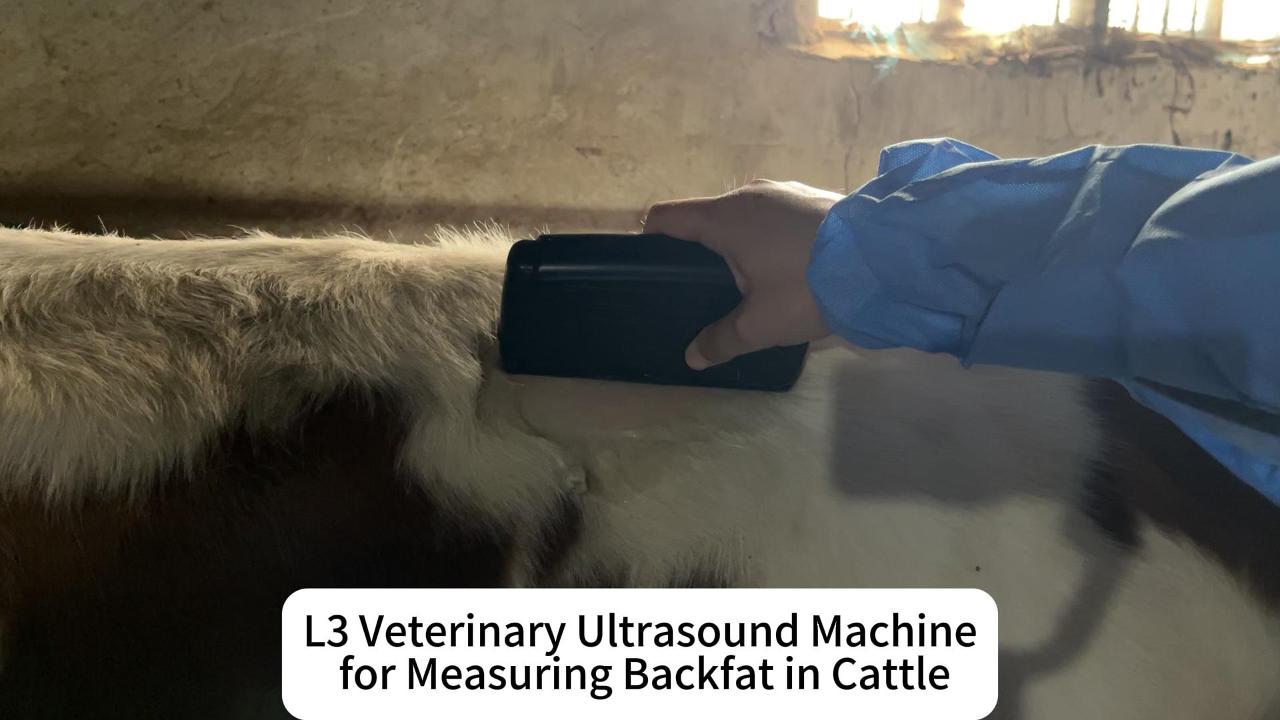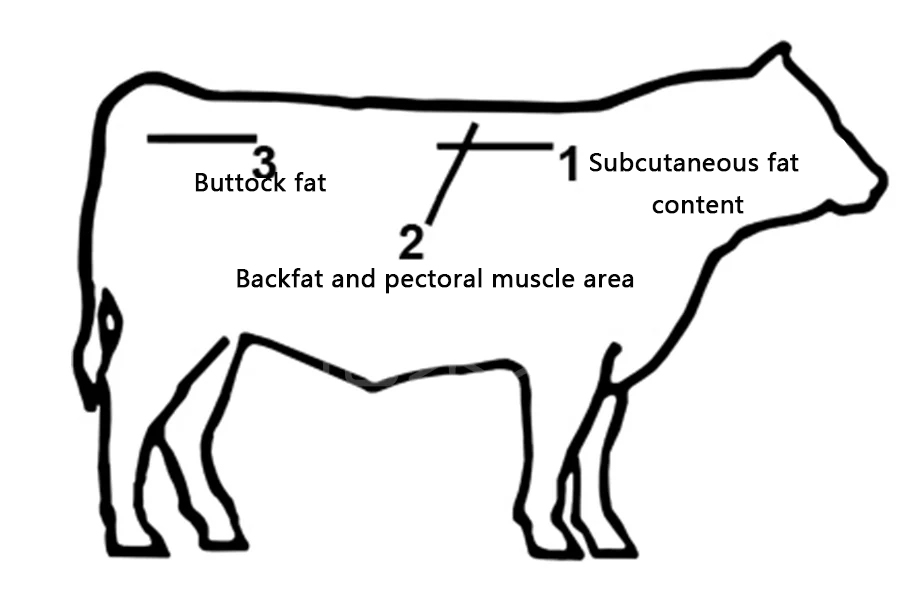Backfat thickness and eye muscle area (EMA) are two key indicators used to evaluate the growth performance and meat quality of beef cattle. Traditional measurement methods are often destructive, complicated, and time-consuming. With the introduction of veterinary ultrasound technology, it is now possible to obtain accurate, non-invasive, and repeatable measurements of these parameters.
1. Backfat Thickness and Eye Muscle Area
The backfat thickness refers to the thickness of the subcutaneous fat layer on the cattle’s back. It reflects fat deposition and serves as an important index for evaluating the growth condition and carcass quality of beef cattle.
The eye muscle area, located at the longissimus dorsi on the back, represents muscle development. A larger eye muscle area generally indicates higher meat yield and better tenderness. Therefore, accurate measurement of both parameters plays a vital role in optimizing feeding management and improving meat quality.
2. Equipment Preparation
Before measurement, it is important to prepare a reliable and precise bovine ultrasound scanner.
In this case, we use the Dawei L3 Veterinary Ultrasound, a portable and high-resolution imaging device suitable for livestock applications.Of course, for outdoor cattle measurements, pairing the handheld livestock ultrasound Slite with a backfat probe is also an excellent choice.
The unit is equipped with convex and linear probes, allowing for flexible scanning of the back and loin areas. Ensure the device is functioning properly, the probe surface is clean, and the ultrasound coupling gel is ready.
3. Cattle Restraint and Site Preparation
To ensure accurate measurement, the cattle should be properly restrained in a holding chute to minimize stress and movement.
Clip or shave the hair on the measurement area (back and loin region) and clean the skin with warm water and a soft cloth to remove dirt, oil, and debris. This ensures good contact between the ultrasound probe and the skin, reducing sound reflection loss.
4. Probe Placement and Image Acquisition
Apply a sufficient amount of ultrasound gel to the cleaned skin to improve sound wave transmission. Then place the Dawei L3 probe firmly against the skin, making sure there are no air bubbles between the probe and the surface.
Using the real-time ultrasound display, identify the fat layer and muscle interface on the screen.
For backfat thickness measurement, select the thickest area of the subcutaneous fat as the measurement point.
For eye muscle area measurement, capture the cross-sectional image of the longissimus dorsi at its widest section.
Use the built-in measurement tools of the Dawei L3 cattle ultrasound to calculate both parameters accurately.
5. Data Recording and Analysis
Record the measured values of backfat thickness and eye muscle area for each animal.
These data can be statistically analyzed to assess growth performance, carcass composition, and feeding efficiency.
Farmers and researchers can use this information to adjust nutrition programs, select superior breeding stock, and improve overall herd productivity.
6. Notes and Limitations
During the ultrasound scanning process, it is crucial to keep the probe stable and avoid unnecessary movement.
Measurement errors may occur due to factors such as cattle posture, breathing motion, or operator experience.
Therefore, multiple measurements or complementary methods are recommended to ensure accuracy and reliability.
Despite these limitations, ultrasound-based measurement remains one of the most efficient and non-invasive approaches for evaluating cattle body composition in modern beef production.
The Dawei L3 Veterinary Ultrasound offers a fast, accurate, and non-destructive solution for measuring backfat thickness and eye muscle area in beef cattle.
Its portable design, clear imaging, and user-friendly operation make it ideal for farm-based evaluations, breeding programs, and meat quality research.
With the help of Dawei L3, farmers can achieve better control over cattle growth performance and enhance the economic value of their herds.
Post time: Oct-27-2025





